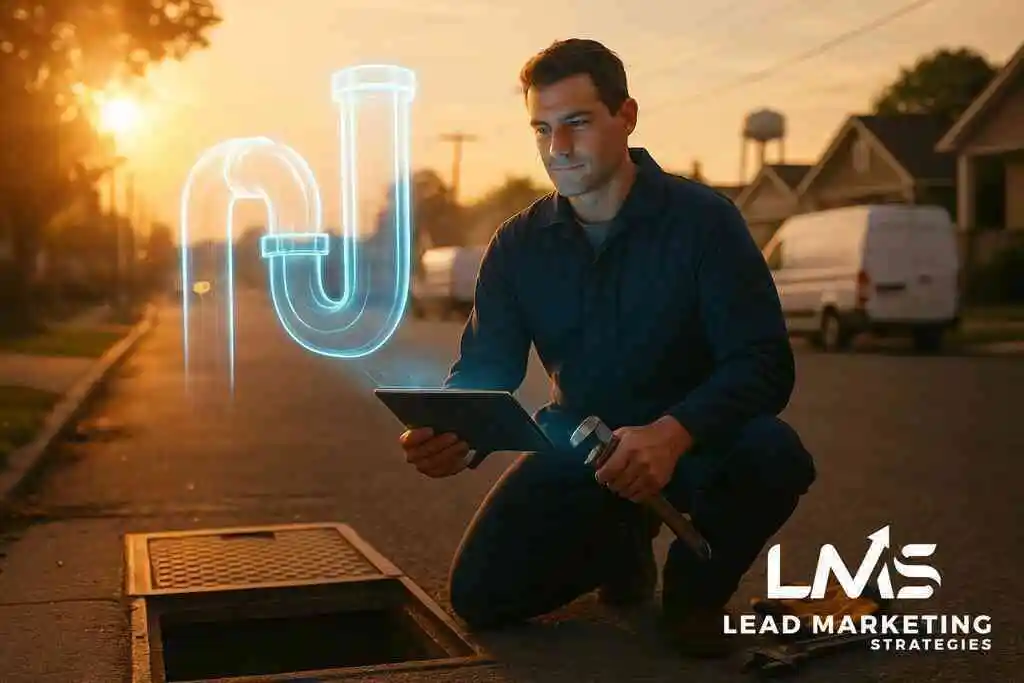
Unlocking the Mystery
Understanding the Basics of SEO and SEM
Search Engine Optimization (SEO) and Search Engine Marketing (SEM) are two pillars of digital marketing that have the power to elevate your online presence to new heights. SEO focuses on enhancing your website’s visibility in the organic search results of search engines. It requires a strategic approach to content creation, keyword research, and website optimization to improve rankings. SEM, on the other hand, encompasses SEO and goes beyond by including paid search advertising. It’s a broader strategy that aims to increase visibility through both organic search results and paid advertisements. Together, SEO and SEM are indispensable for a comprehensive digital marketing strategy that aims at driving web traffic and generating leads.
The Importance of Digital Marketing in Today’s Business World
Digital marketing has revolutionized how businesses reach and engage with their target audience. In today’s digitally-driven world, having a solid digital presence is no longer an option but a necessity for businesses of all sizes. Digital marketing encompasses a wide array of strategies, including SEO and SEM, social media marketing, content marketing, and more, to help businesses connect with their target audience online. The dynamic nature of the digital landscape means that companies must stay ahead of the curve in adopting effective strategies to enhance their digital presence, increase brand awareness, and achieve measurable results for sustained growth.
How SEO and SEM Fit Into Your Digital Marketing Strategy
Incorporating SEO and SEM into your digital marketing strategy is essential for a well-rounded online presence. SEO lays the foundation for long-term success by optimizing your website and content for search engines. It’s about understanding what your target audience is searching for online and tailoring your website to meet those needs. SEM complements SEO efforts by providing immediate visibility in the search engines through paid advertising campaigns. By leveraging both SEO and SEM, businesses can achieve a balanced approach to generating both organic and paid web traffic. This dual strategy is crucial for building brand awareness, targeting specific demographics, and driving conversions with a higher ROI. Integrating SEO and SEM into your digital marketing plan ensures a comprehensive approach to online marketing, catering to the immediate need for visibility while building a sustainable, long-term presence in the digital world.
In the rapidly evolving digital landscape, mastering the art of SEO and SEM is more crucial than ever for businesses aiming to stand out. By understanding the basics, recognizing their importance in digital marketing, and effectively integrating them into your strategy, you can unlock the full potential of your online presence. As we continue to explore these pivotal marketing strategies, remember that a balanced and well-executed approach can lead to unparalleled success in the digital realm.
Diving Deep into SEO
SEO, or Search Engine Optimization, is the cornerstone of any digital marketing plan. It aims to increase a website’s visibility in organic search engine results. Through strategic adjustments and adherence to search engine guidelines, SEO helps improve the chances that your target audience will find your website when searching for relevant terms. Effective SEO is not just about attracting more traffic; it’s about attracting the right kind of traffic that is likely to convert.
What is SEO?
SEO involves optimizing various aspects of your website to make it more attractive to search engines like Google, Bing, and Yahoo. The goal is to rank as high as possible on search engine results pages (SERPs) for specific keywords related to your business or content. This process involves researching what potential customers are searching for online and tailoring your website’s content, structure, and technical setup to meet those needs. SEO is a dynamic field requiring ongoing attention and adaptation to search engines’ continually evolving algorithms.
Critical Components of SEO: On-Page and Off-Page
The effectiveness of SEO strategies hinges on two main components: on-page and off-page optimization. On-page SEO focuses on the elements you can control directly on your website, such as keyword optimization, meta tags, heading structure, and internal linking. Ensuring that your website offers valuable, high-quality content that incorporates relevant keywords is essential for on-page optimization.
Off-page SEO, on the other hand, refers to activities carried out away from your website that impact your site’s trustworthiness and authority. This includes strategies like link building, acquiring high-quality inbound links from other reputable websites, and social media engagement. Both on-page and off-page SEO work together to signal search engines that your site is a credible source of information and worth ranking highly.
The Role of Content Marketing in SEO
Content marketing is a pivotal aspect of SEO that involves creating and distributing relevant, valuable content to attract and engage a clearly defined target audience and ultimately drive profitable customer action. By aligning content marketing strategies with SEO advice, businesses can ensure that their content not only appeals to their audience but also meets the criteria search engines look for to rank content highly. Quality content serves as the backbone of SEO, helping to drive organic traffic, increase engagement, and enhance the overall user experience.
Understanding Keyword Research and SEO Tools
Keyword research is a fundamental SEO task that involves identifying famous words and phrases people enter into search engines. By understanding the most widely used search terms that pertain to your business or sector, you can strategically tailor your content and marketing strategies to match those queries. Numerous SEO tools can aid in this process, offering insights into keyword popularity, competition levels, and search trends. These tools also provide critical analysis of your website’s SEO performance, enabling you to make informed decisions to improve your search rankings.
In the realm of digital marketing, mastering SEO is not just about following a checklist but about understanding the broader landscape of how search engines prioritize and rank content. By diving deep into SEO-comprehending its fundamental principles, staying updated on best practices, and leveraging innovative strategies, Tip ensures that clients not only excel in driving web traffic but also in achieving measurable results and sustaining growth in the competitive digital marketplace.
Exploring SEM Terrain
Defining SEM: Beyond the Basics
Search Engine Marketing (SEM) transcends the foundational elements of SEO, ushering businesses into a realm where visibility equates to well-strategized investments in paid advertising. At its core, SEM is a comprehensive approach that leverages the power of pay-per-click advertising advice alongside SEO to maximize a website’s prominence in search engine results pages (SERPs). This dynamic method of digital marketing is not just about increasing web traffic; it’s about cultivating the right kind of traffic that has a higher propensity for conversion and customer acquisition. SEM’s essence lies in its ability to offer immediate results through targeted ad placements, making it an indispensable tool for businesses seeking to accelerate their online growth.
Within the scope of SEM, advertisers bid for keywords relevant to their target audience, ensuring that their ads appear alongside search results for those keywords. This strategic placement means that SEM can yield almost instant visibility and traffic, a stark contrast to the gradual buildup associated with SEO efforts. The blend of SEO and SEM within a digital marketing strategy ensures that businesses can maintain a solid online presence both in the short term through SEM and sustainably over time with SEO.
The Power of Pay-Per-Click Advertising
Pay-per-click (PPC) advertising is one of SEM’s cornerstone strategies. It empowers businesses to bid on the chance to have their ad appear in the sponsored section of SERPs when someone searches for a keyword related to their business offering. This model is particularly effective because it targets users who are already interested in what a business has to offer, leading to higher conversion rates compared to more traditional forms of advertising.
The mechanism of PPC is straightforward: you pay only when a user clicks on your ad, making it a cost-effective strategy. This efficiency is complemented by the ability to control budgets tightly, target specific demographics, and measure success with pinpoint accuracy. Effective PPC campaigns hinge on understanding not just the keywords that potential customers are using but also the intent behind these searches, enabling advertisers to tailor their ads to meet users’ needs precisely.
Crafting Effective Ad Campaigns for SEM
Creating successful SEM campaigns requires more than just selecting the right keywords and setting a budget. It involves a deep understanding of one’s target audience, including their habits, preferences, and search behaviors. Marketers must craft compelling ad copy, design visually appealing ad formats, and opt for strategic ad placements that resonate with potential customers. Additionally, aligning landing pages with the promise of the ad is crucial to converting clicks into meaningful actions, such as sales or sign-ups.
Moreover, SEM campaigns must be flexible and responsive to rapidly changing market conditions and consumer behaviors. Regular monitoring and adjustments are necessary to ensure that campaigns continue to perform optimally. By analyzing data and metrics, such as click-through rates (CTR), conversion rates, and cost per acquisition (CPA), marketers can refine their strategies and make data-driven decisions to enhance campaign effectiveness over time.
Keyword Research for PPC: A Focused Approach
Keyword research for PPC campaigns is a tightly focused endeavor, aiming to identify not only the most relevant and popular keywords but also those that offer the best return on investment (ROI). This process involves discerning the specific terms and phrases that potential customers are using to search for products or services like yours. But it doesn’t stop there; it also requires an analysis of keyword competition and cost, helping advertisers to smartly allocate their budgets to target high-value keywords that are more likely to lead to conversions.
Practical keyword research tools and analytical methods are essential for uncovering insights into search trends and behaviors, enabling businesses to refine their keyword strategies continually. By prioritizing keywords based on their relevance, competition, and search volume, companies can optimize their PPC campaigns to reach the most interested segments of their target audience, maximizing both the visibility and effectiveness of their SEM efforts.
SEO vs SEM: The Main Differences
Organic Search vs Paid Search: What Sets Them Apart
The digital landscape is vast, and at the heart of navigating it are two critical concepts: SEO and SEM. While both aim to increase visibility on search engines, the core difference lies in the approach. Organic search, empowered by SEO, is all about enhancing a website’s performance to earn higher rankings in search results without paying for placement. This strategy focuses on optimizing web content, from blog posts to website architecture, to naturally attract traffic over time. For example, integrating effective SEM tactics for small businesses into a digital strategy can complement organic efforts with paid opportunities, highlighting the blend and balance needed for modern digital success.
Paid search, on the other hand, is synonymous with SEM outside of SEO efforts, where visibility is achieved through paid advertising. Companies bid on keywords relevant to their target market, paying for their ads to appear atop or beside organic search results. The immediate visibility provided by paid search is its biggest allure, offering businesses a quick way to increase traffic and drive conversions.
Traffic Generation and Timeframe for Results
When it comes to traffic generation, SEO and SEM follow different timelines and yield varying results. SEO is a long-term strategy. Its effects accumulate over time, requiring patience and persistence but ultimately leading to sustainable organic traffic growth. The focus here is on building a solid foundation of quality content, reputable backlinks, and user-centric website optimization strategies.
SEM, particularly pay-per-click (PPC) advertising, offers immediate results. Businesses can essentially buy their way to the top of search results, generating traffic as soon as campaigns are live. This immediate influx of visitors can be particularly valuable for product launches, seasonal promotions, or when quick visibility is more critical than long-term growth.
Cost Implications of SEO and SEM
The budget plays a significant role in choosing between SEO and SEM. With SEO, the costs are typically upfront and involve investments in content creation, website optimization, and possibly SEO tools or the services of a digital marketing agency. Although it requires a significant time and resource commitment initially, the long-term benefits of free organic traffic can surpass initial investments, making it a cost-effective strategy over time.
SEM costs, meanwhile, are more straightforward and ongoing. You pay for each click your ad receives (pay-per-click), which means the budget can quickly escalate with increased visibility. The advantage here is the ability to control spending by setting daily budgets and measuring ROI closely, making it easier to adjust campaigns in real-time for optimal performance.
Which Approach is Right for Your Business?
Deciding whether SEO or SEM is right for your business depends on numerous factors, including your marketing objectives, budget, and desired timeframe for results. For new websites or businesses in highly competitive markets, SEM can provide a quick visibility lift-off, though at a cost. It’s vital for short-term goals or specific campaigns where immediate results are paramount.
SEO, recommended for establishing a long-lasting online presence, is ideal for building brand authority and organic audience growth. It’s a fundamental strategy for businesses aiming for sustainable, long-term success online. For many, a combined approach-leveraging SEM for immediate visibility while developing an SEO strategy for organic growth the best of both worlds, aligning short-term victories with long-term ambitions. Balancing both methods allows companies to maximize their digital marketing efforts, ensuring they’re not only seen but also sustainably positioned for future growth.
Integrating SEO and SEM into Marketing Strategy
Creating a Balanced Digital Marketing Plan
Integrating SEO and SEM into a comprehensive digital marketing plan is critical for achieving a balanced online presence. While SEO lays the groundwork for sustainable growth, SEM provides the flexibility to target specific audience segments and gain immediate visibility. A balanced digital marketing plan leverages the strengths of both SEO and SEM, using effective strategies to attract and engage a target audience, convert leads, and build brand loyalty.
To create this balance, businesses should start with a strong SEO foundation, optimizing their website’s design, content, and user experience for organic search. Incorporating web design recommendations aimed at improving SEO can significantly enhance a site’s visibility and user engagement. With this foundation in place, SEM campaigns can then be used to supplement organic efforts, targeting specific keywords and demographics with paid ads to drive traffic and conversions quickly.
A successful digital marketing plan also involves continuous analysis and adjustment. By monitoring the performance of both SEO and SEM efforts, businesses can identify what’s working and what needs improvement, allowing for real-time adjustments to strategies and budgets. This dynamic approach ensures the most effective use of resources, maximizing ROI across all digital marketing activities.
When to Use SEO Over SEM and Vice Versa
Deciding when to use SEO over SEM, or vice versa, depends on the specific goals and circumstances of each marketing campaign. SEO is the best approach for businesses aiming for long-term growth and establishing a solid online presence. It’s ideal for building authority and trust within your industry and enhancing organic visibility for a wide range of search terms.
On the other hand, SEM is more suited to short-term objectives, such as promoting a time-sensitive event, launching a new product, or penetrating a new market where immediate visibility is required. SEM allows businesses to position themselves at the top of search results quickly, albeit at a cost.
The decision also depends on the competitive landscape. In highly competitive markets, where established players dominate organic search results, SEM can provide a competitive edge, allowing newer businesses to gain visibility alongside the incumbents. Conversely, for niche markets with less competition, investing in SEO might be a more cost-effective strategy, yielding sustainable traffic without the ongoing costs associated with PPC advertising.
Leveraging SEO and SEM for Brand Awareness
Building brand awareness in the digital age requires a strategic blend of SEO and SEM. By appearing in both organic and paid search results, businesses can significantly increase their visibility and recognition online. This dual presence not only reinforces the brand in the minds of potential customers but also conveys a sense of authority.
SEO plays a critical role in building brand awareness by ensuring the business appears for a wide array of relevant search terms. High-quality content tailored to the needs and interests of the target audience can elevate a brand’s position in organic search results, driving steady, long-term traffic to the website.
SEM, with its targeted advertising options, complements these efforts by placing the brand directly in front of specific audiences. Through carefully crafted ad campaigns, businesses can highlight their unique value proposition, offers, and messaging, capturing the attention of potential customers at various stages of the buying journey.
Incorporating social media platforms into the mix can further amplify brand visibility. Using social media platforms for the 2024 strategy can enhance SEO and SEM efforts by driving additional traffic to the website and improving engagement and shareability of content.
Measuring Success: KPIs for SEO and SEM
Measuring the success of SEO and SEM initiatives is crucial for evaluating their effectiveness and guiding future digital marketing strategies. Key performance indicators (KPIs) provide insights into how well these efforts are achieving their objectives, allowing businesses to adjust their tactics accordingly.
For SEO, essential KPIs include organic traffic, search rankings for targeted keywords, click-through rates (CTR), bounce rates, and conversion rates from organic search traffic. These metrics reveal the health and performance of organic search strategies, indicating areas of success and identifying opportunities for improvement.
In SEM, critical KPIs consist of cost per click (CPC), quality score, cost per acquisition (CPA), return on ad spend (ROAS), and overall conversion rates from paid campaigns. Monitoring these metrics allows advertisers to evaluate the efficiency and profitability of their SEM campaigns and make necessary adjustments to bid strategies, ad copy, and targeting to optimize performance.
Regularly analyzing these KPIs provides a roadmap for continuous improvement in SEO and SEM efforts. This ensures that businesses can adapt to changes in the market and consumer behavior, ultimately leading to increased visibility, traffic, and conversions.
Industry-Specific Approaches
SEO and SEM for E-commerce Websites
E-commerce websites stand to gain significantly from a well-executed mix of SEO and SEM strategies. For these digital storefronts, visibility means everything. SEO lays the groundwork by ensuring that products and categories are optimized for search engines. This includes detailed product descriptions, high-quality images, and user reviews, all structured with the right keywords to attract organic traffic. On the flip side, SEM can propel an e-commerce site to the top of search results through targeted ad campaigns, focusing on high-conversion keywords that drive sales.
The integration of SEO with SEM strategies for businesses in New York can be particularly potent for e-commerce sites targeting specific geographic markets. Localized SEO strategies ensure that your site ranks highly in local searches, while SEM can pinpoint ads to a select local audience. Together, they offer a comprehensive approach to capturing both broad and niche market segments, vital for e-commerce success.
Real Estate Marketing: A Focus on Local SEO and SEM
Real estate marketing thrives on local search engine strategies. With local SEO, real estate professionals can optimize their websites to appear for searches specific to their regions. This includes incorporating local keywords, creating location-specific content, and ensuring their listings appear in local directory services. A practical guide on local SEO services near New York emphasizes the importance of accurate and comprehensive local listings, which can significantly enhance visibility in a competitive market.
SEM augments these efforts with targeted ad campaigns that can highlight specific properties, open houses, or real estate services to audiences in precise locations. These paid search strategies can quickly generate leads by placing real estate offerings directly in front of potential homebuyers or sellers at the moment they’re searching online.
Content Strategies for Law Firm Marketing
The legal industry benefits immensely from strategic content marketing, which can be optimized for SEO and SEM. Content that addresses common legal questions provides insights into the law or offers guidance on selecting attorneys can draw significant organic traffic to a law firm’s website. A comprehensive law firm content marketing strategy should involve creating informative blog posts, articles, and guides that position the firm as an authority in its field.
For SEM, law firms can utilize paid search ads to target individuals searching for legal assistance. By focusing on keywords related to their specialties, law firms can effectively reach potential clients at the moment they’re most in need. These strategies combined can enhance a law firm’s online presence, build trust with potential clients, and generate qualified leads.
Customizing SEM Strategies for Healthcare Marketing
Healthcare marketing requires a sensitive and tailored approach, especially when employing SEM tactics. Healthcare providers must ensure that their advertising campaigns are compliant with regulations while also meeting the needs of their audience. Targeted ads can promote specific healthcare services, events, or community health initiatives, reaching out to individuals who are searching for information or assistance.
Practical healthcare marketing advice stresses the importance of combining SEM with solid SEO practices. This ensures that healthcare providers maintain a balance between paid and organic strategies. Well-optimized content that provides valuable health information can achieve high search rankings, complemented by SEM efforts that boost visibility for targeted healthcare services. This dual approach can significantly enhance patient engagement, facilitating a connection between healthcare providers and the communities they serve.
Emerging Trends in SEO and SEM
The Impact of Voice Search on SEO and SEM
Voice search technology has revolutionized how users interact with search engines, prompting a shift in SEO and SEM strategies. As devices like smartphones, smart speakers, and virtual assistants become more prevalent, optimizing for voice search is no longer optional; it’s a necessity. Voice search optimization requires a focus on natural language and question-based queries, as users tend to use complete sentences rather than the traditional short, typed phrases. This trend emphasizes the importance of content that directly answers users’ questions and the inclusion of long-tail keywords that mirror conversational speech. For SEM, voice search means adjusting keyword strategies to match the more detailed, question-oriented nature of voice queries, ensuring ads are triggered by the kinds of phrases people use in spoken conversation.
Artificial Intelligence: A Game Changer in Digital Advertising
Artificial Intelligence (AI) is transforming digital advertising, making it more efficient and targeted. AI technologies enable marketers to analyze vast amounts of data to identify patterns, preferences, and behaviors of their target audience. From automating digital advertising basics to optimizing ad spend, AI’s prowess allows for more personalized and effective ad campaigns. In SEO, AI tools can predict search trends, suggest content topics, and optimize websites in ways that were previously unimaginable. For SEM, AI-driven algorithms enhance ad targeting and bidding strategies, ensuring higher ROI for paid search campaigns. By harnessing AI, marketers can craft more engaging, relevant, and successful SEO and SEM strategies that resonate with their audience on a deeper level.
Mobile Optimization: A Must for SEO and SEM
With mobile devices accounting for a significant portion of web traffic, mobile optimization has become essential for both SEO and SEM. Google’s mobile-first indexing underscores the importance of ensuring websites are designed with mobile users in mind, prioritizing load times, responsive web page design, and mobile user experience. For SEO, a mobile-optimized website is more likely to rank higher in search results, as it offers the fast, user-friendly experience search engines favor. In SEM, mobile optimization influences ad performance, with mobile-friendly landing pages resulting in higher conversion rates. As the mobile audience grows, tailoring SEO and SEM efforts to meet their expectations is vital for any successful digital marketing strategy.
The Future of PPC and Organic Search
The future of PPC (Pay-Per-Click) and organic search promises more integration and sophistication in strategies. As search engines evolve, the line between paid and organic search results may become increasingly blurred, with both SEO and SEM needing to adapt to maintain visibility. Advances in machine learning and AI could lead to more personalized search results, pushing marketers to fine-tune their approaches for both PPC and organic strategies. Moreover, the growth in vertical search areas like voice, visual, and mobile search opens new avenues for targeted SEO and SEM campaigns. Marketers must stay ahead by embracing technologies and trends that align with user behavior and preferences, ensuring their strategies remain effective in the ever-evolving digital landscape.
Implementing and Optimizing Your Strategies
Best Practices for SEO and SEM Management
Implementing and optimizing SEO and SEM strategies requires a diligent, informed approach to ensure your digital marketing efforts yield the best results. For SEO, begin with a solid foundation of keyword-rich, high-quality content that delivers value to your target audience. Regularly updating your website with fresh, relevant content will not only engage readers but also attract search engine crawlers. Implementing user interface design principles is crucial for improving the website’s usability, significantly affecting SEO rankings by enhancing the user experience. For SEM, effective management involves continually monitoring and tweaking your ad campaigns to maximize return on investment. This means adjusting your bids, experimenting with different ad copy, and refining your target audiences based on performance data. SEO and SEM are not set-and-forget strategies but require ongoing attention and optimization.
Tools and Techniques for Enhancing Your Digital Presence
In the quest to elevate your digital presence, leveraging the right tools and techniques is paramount. For SEO, tools like Google Analytics and SEMrush offer invaluable insights into keyword performance, competitor analysis, and website traffic, aiding in the meticulous planning and execution of strategies. For enhancing SEM efforts, platforms like Google Ads provide comprehensive functionalities for creating, managing, and optimizing ad campaigns. Utilizing tools for optimizing web design for SEO in 2024 ensures your website is not only visually appealing but also optimized for search engines and user engagement. Incorporating advanced SEO techniques, such as schema markup and AMP pages, can further boost your site’s visibility and performance.
Navigating Google Ads for SEM Success
Google Ads is a potent tool for SEM, offering businesses a direct way to increase visibility in search engine results rapidly. To navigate Google Ads successfully, start by defining clear, measurable goals for your campaigns. Whether you’re focusing on lead generation, brand awareness, or e-commerce sales, your objectives will guide your bidding strategies and choice of ad formats. Employing targeted keyword research ensures your ads appear in relevant searches, maximizing your budget’s impact. It’s also crucial to craft compelling ad copy and use strong calls-to-action (CTAs) to engage potential customers. Regularly reviewing your campaign performance and adjusting based on analytics is essential for optimizing your SEM efforts and achieving the best possible ROI.
Continuous Optimization and A/B Testing
For both SEO and SEM, the mantra for success is continuous optimization. This process involves consistently analyzing performance data, identifying areas for improvement, and implementing changes to enhance effectiveness. A/B testing is a crucial technique in this optimization process, allowing you to compare different versions of your web pages or ads to see which performs better. By methodically testing variations in headlines, content, images, and CTAs, you can incrementally improve your site’s conversion rates and your ad campaigns’ effectiveness. It’s essential to approach A/B testing with a clear hypothesis and to test one variable at a time for accurate results. Embracing a culture of testing and data-driven decision-making is essential for staying competitive in the dynamic digital marketing landscape.
Conclusion
The Synergy Between SEO and SEM
The interconnected relationship between Search Engine Optimization (SEO) and Search Engine Marketing (SEM) serves as a testament to the evolving landscape of digital marketing. Integrating both SEO and SEM into your marketing strategy can create a powerful synergy, leveraging the strengths of each to achieve a comprehensive online presence. SEO, with its focus on organic growth, builds a solid and enduring foundation for your website. It enhances your reputation and establishes your authority in your industry over time. Meanwhile, SEM offers the agility and immediacy of paid search ads, allowing you to capitalize on trends quickly, introduce new products or services, and target specific demographics with precision.
This dual approach not only maximizes your visibility across the digital sphere but also increases the likelihood of reaching your target audience at different stages of their journey. From generating initial awareness through paid ads to cementing your authority with top organic search rankings, the combination of SEO and SEM strategies is critical to sustaining long-term growth and achieving measurable success in today’s competitive market.
Staying Ahead in the Digital Marketing Game
Staying ahead in the fast-paced world of digital marketing requires a commitment to continuous learning, adaptation, and innovation. The algorithms that govern search engines are constantly evolving, as are users’ behaviors and preferences. Keeping abreast of the latest trends, technologies, and techniques in SEO and SEM is crucial for maintaining a competitive edge. This includes exploring new advancements such as voice search optimization, artificial intelligence applications in digital advertising, and the implications of mobile-first indexing on your digital strategy.
Moreover, leveraging analytics to monitor the performance of your SEO and SEM initiatives allows for data-driven decision-making. By understanding what works well and what doesn’t, you can refine your strategies for increased effectiveness. Embracing a culture of experimentation and testing, mainly through A/B testing of ad copy, landing pages, and call-to-action buttons, will enable you to fine-tune your approach and discover what resonates most with your audience.
Final Tips and Thoughts on Choosing the Right Digital Marketing Agency
Selecting the right digital marketing agency is paramount to implementing a successful SEO and SEM strategy. The ideal agency should not only have a comprehensive understanding of both SEO and SEM but also possess a proven track record of delivering measurable results for its clients. Look for an agency that values transparency, providing clear communication and regular updates on the progress and performance of your campaigns.
An agency that takes a holistic approach to digital marketing, considering your business objectives, target audience, and unique market challenges, will be best equipped to tailor a strategy that aligns with your goals. Furthermore, partner with an agency that remains at the forefront of digital marketing trends and is committed to ethical practices, ensuring your online reputation remains intact.
Marketing Tip, by Lead Marketing Strategies, epitomizes such an agency with its dedication to offering expert advice and practical strategies tailored to meet the diverse needs of businesses across various industries. Whether you are looking to enhance your SEO efforts, optimize your SEM campaigns, or integrate both for maximum impact, Marketing Tip provides the insights and expertise necessary to elevate your digital presence and drive your business forward.
Frequently Asked Questions
Question: What are the key differences between SEO and SEM, and how can Marketing Tip help me leverage these strategies for my business?
Answer: SEO, or Search Engine Optimization, focuses on improving your website’s visibility in organic search results through practices such as keyword research, content creation, and on-page optimization. SEM, or Search Engine Marketing, expands upon SEO by incorporating paid advertising strategies like PPC (Pay-Per-Click) to immediately enhance your visibility on search engine results pages (SERPs). At Marketing Tip, we specialize in both SEO and SEM strategies, offering a comprehensive approach to digital marketing. Our team delivers expert insights, from conducting thorough keyword research and SEO optimization to crafting targeted SEM campaigns that drive web traffic and conversions. By trusting Marketing Tip for your SEO and SEM needs, you gain access to tailored strategies that align with your business goals, ensuring maximized visibility and measurable results in the digital landscape.
Question: According to the’ The Difference Between SEO and SEM Explained’ blog post, how can integrating both SEO and SEM into my digital marketing plan boost my website’s traffic and lead generation?
Answer: Integrating both SEO and SEM into your digital marketing plan offers a balanced approach to generating web traffic and leads. As our blog post ‘The Difference Between SEO and SEM Explained’ highlights, SEO builds a solid foundation for long-term growth by optimizing your website for organic search results, thereby enhancing your online presence. Simultaneously, SEM provides an immediate boost in visibility through targeted, paid advertisements. This dual strategy leverages the strengths of organic and paid search, driving consistent traffic while also capturing potential customers at different stages of their search process. Marketing Tip helps businesses craft and implement these strategies effectively, using our vast expertise to optimize your digital presence across all search engines, thereby increasing brand awareness, website traffic, and lead generation.
Question: What role does keyword research play in SEO and SEM, and how can Marketing Tip assist my company in this area?
Answer: Keyword research is fundamental to the success of both SEO and SEM strategies. It involves identifying the terms and phrases your target audience uses when searching for products or services online. For SEO, keyword research helps guide content creation and on-page optimization efforts, ensuring your website ranks well for relevant searches. SEM enables you to bid on the right keywords for your pay-per-click (PPC) ad campaigns, ensuring your ads appear to the intended audience. Marketing Tip employs a suite of advanced tools and techniques for comprehensive keyword research, analyzing search trends and competition to identify high-value keywords. Our strategic approach not only enhances your website’s SEO performance but also optimizes your SEM campaigns for maximum visibility and conversion rates, offering a competitive edge in digital marketing.
Question: How does Marketing Tip keep up with search engines constantly evolving algorithms to maximize SEO and SEM effectiveness for clients?
Answer: At Marketing Tip, we prioritize staying at the forefront of the rapidly changing digital marketing landscape. Our team of experts continually monitors updates and trends in search engine algorithms to adjust our SEO and SEM strategies accordingly. Through ongoing education, attending industry conferences, and leveraging cutting-edge technologies, we adapt our tactics to ensure optimal performance. Our proactive approach involves regular analysis of campaign data, A/B testing, and adopting emerging SEO and SEM techniques. We are committed to deploying the most effective and ethical strategies that align with search engine guidelines, ensuring our clients’ digital marketing efforts are not only successful but also sustainable in the long run. By partnering with Marketing Tip, you benefit from our dedication to innovation and excellence in SEO and SEM.
Question: Can Marketing Tips help my business target specific demographics through SEO and SEM?
Answer: Absolutely! One of the key advantages of SEO and SEM is the ability to target specific demographics, and at Marketing Tip, we specialize in creating targeted digital marketing strategies. Through SEO, we optimize content and employ strategic on-page tactics to attract your ideal audience organically. With SEM, we can further refine this targeting with pay-per-click (PPC) ad campaigns that allow for detailed demographic targeting, including location, age, interests, and more. Our team uses sophisticated analytical tools to identify and understand your target audience, tailoring campaigns to meet their specific needs and behaviors. This targeted approach enhances the effectiveness of your marketing efforts, increasing engagement, conversion rates, and ROI.











